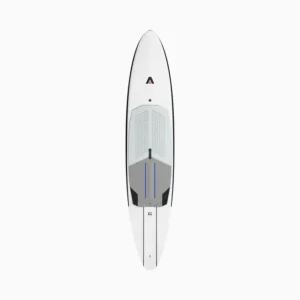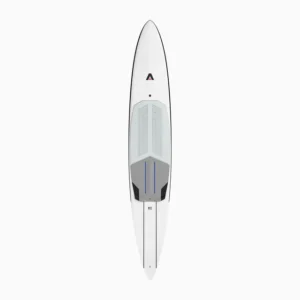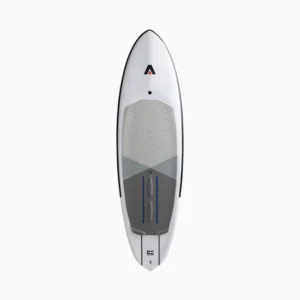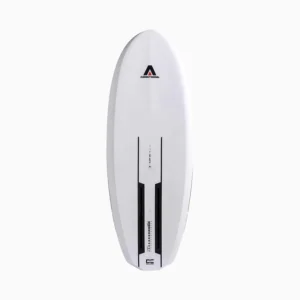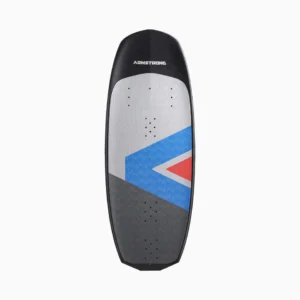Downwind Mk III Board
€1,700.00The Armstrong Downwind Mk III Board Overview Downwind Mk III Board Standing at the forefront of downwind foiling innovation, the Armstrong Downwind Mk III Board embodies years of design expertise, rider feedback, and relentless field testing. As the third-generation evolution of Armstrong’s downwind board series, it captures everything learned from previous models and integrates a host of new features to maximize performance, comfort, and durability.Downwind Mk III Board Armstrong’s design philosophy revolves around empowering riders to explore, to push boundaries, and to connect deeply with the ocean. Therefore, every curve, every material choice, and every specification on the Mk III has been carefully chosen to serve that mission. Whether you are launching into a Hawaiian swell or chasing Mediterranean wind bumps, the Mk III is ready.Downwind Mk III Board Key Design Philosophy What makes the Armstrong Downwind Mk III Board so compelling is its balanced approach to design. Armstrong never overcomplicates things, instead following a philosophy of purpose-driven design. Each element of the Mk III supports downwind functionality, from the precise entry rocker to the volume distribution. Many downwind boards on the market attempt to imitate a simple SUP outline with only minor tweaks. In contrast, Armstrong took a ground-up approach. They asked: what does a downwind foiler truly need to catch more bumps, launch more efficiently, and maintain control in variable conditions? The Mk III answers with a uniquely tuned hull profile, efficient foil box integration, and construction materials tested to withstand punishing ocean environments. In essence, the Armstrong Downwind Mk III Board was built for you — the passionate rider who refuses to compromise and demands a board that works in harmony with the ocean. Refined Hull Shape Let’s dive into the hull. This is the most critical part of a downwind board because it defines how easily you break free from the water and achieve lift. The Mk III hull shape builds on the lessons of its predecessors, with: Optimized entry rocker, to encourage early lift Flat midsection, minimizing drag during paddle acceleration Clean tail exit, so water release is instantaneous as you gain speed Balanced rail lines, stabilizing the board through side chop This hull shape reflects hours of prototype testing in conditions ranging from glassy swells to turbulent cross-seas. Armstrong’s design team sought the sweet spot between paddle tracking and rapid lift-off — a tricky balance. The result is a board that helps you catch bumps earlier, with less effort, and that accelerates quickly when you put in a hard stroke. Moreover, the Mk III’s subtle hull contours help reduce unwanted yawing. In challenging ocean conditions, you will appreciate this tracking stability, as it means you can focus on timing your paddle strokes rather than constantly correcting your direction. Carefully Tuned Rocker The board’s rocker profile is another standout feature. Armstrong’s engineers optimized the curve to ensure fast paddling yet maintain enough nose lift to handle steep bumps without pearling. Too much nose rocker slows paddling efficiency. Too little, and you risk nose-diving as you enter a wave. The Mk III’s rocker balances these extremes with a shape tested through hundreds of rider sessions. Whether you are pumping across a wind swell or catching a long-period ground swell, the rocker adapts, providing confidence and predictability. That rocker, in combination with the board’s foil mounting system, creates a seamless transition from paddle acceleration to foil flight. You will notice how easy it feels to shift from paddling to lifting, without stalling or dropping off the bump. Volume Distribution Volume is a hidden hero in downwind boards. Distributing it properly can make or break your session. The Armstrong Downwind Mk III Board places its volume to ensure:Downwind Mk III Board High stability at rest Confident balance during paddle acceleration Supportive deck when moving weight to the rear for takeoff A slightly domed deck around the stance area gives you a secure platform, while low-profile rails reduce windage and minimize cross-wind push. Combined, these features deliver a stable, comfortable board that is easy to maneuver even in chaotic ocean states. Tail Shape & Release The tail section deserves special attention. Armstrong engineers sculpted it to encourage fast water release. A squared-off tail, with precisely blended edges, gives the board that momentary “pop” that helps break surface tension as the foil lifts.Downwind Mk III Board During testing, Armstrong prototypes revealed that even subtle tail adjustments could transform the board’s performance. On the Mk III, the tail is optimized for both launch and pumping. Once you are flying, you will notice how the tail stays clear of turbulence, preventing unwanted drag on touchdowns and supporting a cleaner re-entry if you breach. Foil Mounting System Another pillar of the Mk III’s design is its foil mounting system. Armstrong uses a robust carbon-titanium hybrid box to anchor the foil. Riders need confidence that their foil stays firmly connected during powerful takeoffs, landings, or impacts with chop. This foil box also allows a range of mounting positions so you can fine-tune your setup. If you want a more reactive, pitch-sensitive ride, you can shift your mast forward. If you prefer a stable, locked-in feeling, you can slide it rearward. Armstrong includes precise indexing marks so you can replicate your settings consistently across sessions. Construction and Materials True to Armstrong’s no-compromise DNA, the Downwind Mk III Board uses only the highest-grade materials. The skin is built from a multi-layer carbon laminate, optimized for durability and stiffness, while maintaining a reasonable overall weight. Inside, a precision-shaped EPS core offers impact resistance and exceptional strength-to-weight balance. The deck features high-compression sandwich construction to avoid pressure dents from paddle strokes or foot pressure. Armstrong boards have a reputation for withstanding years of intense use, and the Mk III lives up to that promise with construction details that protect your investment. In addition, Armstrong uses a durable finish that resists UV breakdown, ensuring your board looks good and stays structurally sound after countless sunny sessions. Downwind Mk III Board Key Performance Advantages So what does all of…
